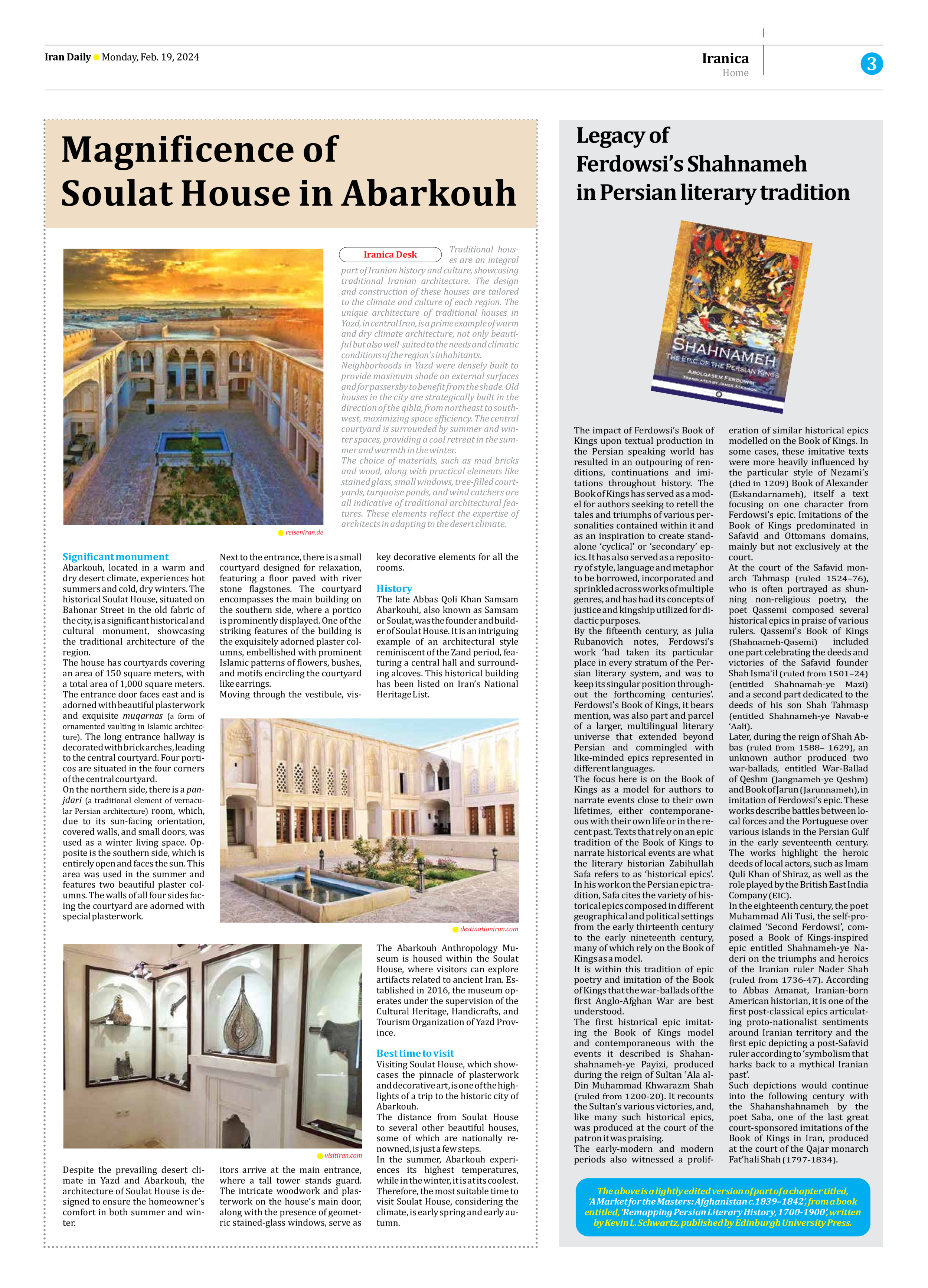
Legacy of Ferdowsi’s Shahnameh in Persian literary tradition
The impact of Ferdowsi’s Book of Kings upon textual production in the Persian speaking world has resulted in an outpouring of renditions, continuations and imitations throughout history. The Book of Kings has served as a model for authors seeking to retell the tales and triumphs of various personalities contained within it and as an inspiration to create stand-alone ‘cyclical’ or ‘secondary’ epics. It has also served as a repository of style, language and metaphor to be borrowed, incorporated and sprinkled across works of multiple genres, and has had its concepts of justice and kingship utilized for didactic purposes.
By the fifteenth century, as Julia Rubanovich notes, Ferdowsi’s work ‘had taken its particular place in every stratum of the Persian literary system, and was to keep its singular position throughout the forthcoming centuries’. Ferdowsi’s Book of Kings, it bears mention, was also part and parcel of a larger, multilingual literary universe that extended beyond Persian and commingled with like-minded epics represented in different languages.
The focus here is on the Book of Kings as a model for authors to narrate events close to their own lifetimes, either contemporaneous with their own life or in the recent past. Texts that rely on an epic tradition of the Book of Kings to narrate historical events are what the literary historian Zabihullah Safa refers to as ‘historical epics’. In his work on the Persian epic tradition, Safa cites the variety of historical epics composed in different geographical and political settings from the early thirteenth century to the early nineteenth century, many of which rely on the Book of Kings as a model.
It is within this tradition of epic poetry and imitation of the Book of Kings that the war-ballads of the first Anglo-Afghan War are best understood.
The first historical epic imitating the Book of Kings model and contemporaneous with the events it described is Shahanshahnameh-ye Payizi, produced during the reign of Sultan ʿAla al-Din Muhammad Khwarazm Shah (ruled from 1200-20). It recounts the Sultan’s various victories, and, like many such historical epics, was produced at the court of the patron it was praising.
The early-modern and modern periods also witnessed a proliferation of similar historical epics modelled on the Book of Kings. In some cases, these imitative texts were more heavily influenced by the particular style of Nezami’s (died in 1209) Book of Alexander (Eskandarnameh), itself a text focusing on one character from Ferdowsi’s epic. Imitations of the Book of Kings predominated in Safavid and Ottomans domains, mainly but not exclusively at the court.
At the court of the Safavid monarch Tahmasp (ruled 1524–76), who is often portrayed as shunning non-religious poetry, the poet Qassemi composed several historical epics in praise of various rulers. Qassemi’s Book of Kings (Shahnameh-Qasemi) included one part celebrating the deeds and victories of the Safavid founder Shah Ismaʿil (ruled from 1501–24) (entitled Shahnamah-ye Mazi) and a second part dedicated to the deeds of his son Shah Tahmasp (entitled Shahnameh-ye Navab-e ʿAali).
Later, during the reign of Shah Abbas (ruled from 1588– 1629), an unknown author produced two war-ballads, entitled War-Ballad of Qeshm (Jangnameh-ye Qeshm) and Book of Jarun (Jarunnameh), in imitation of Ferdowsi’s epic. These works describe battles between local forces and the Portuguese over various islands in the Persian Gulf in the early seventeenth century. The works highlight the heroic deeds of local actors, such as Imam Quli Khan of Shiraz, as well as the role played by the British East India Company (EIC).
In the eighteenth century, the poet Muhammad Ali Tusi, the self-proclaimed ‘Second Ferdowsi’, composed a Book of Kings-inspired epic entitled Shahnameh-ye Naderi on the triumphs and heroics of the Iranian ruler Nader Shah (ruled from 1736-47). According to Abbas Amanat, Iranian-born American historian, it is one of the first post-classical epics articulating proto-nationalist sentiments around Iranian territory and the first epic depicting a post-Safavid ruler according to ‘symbolism that harks back to a mythical Iranian past’.
Such depictions would continue into the following century with the Shahanshahnameh by the poet Saba, one of the last great court-sponsored imitations of the Book of Kings in Iran, produced at the court of the Qajar monarch Fat’hali Shah (1797-1834).
The above is a lightly edited version of part of a chapter titled,
‘A Market for the Masters: Afghanistan c.1839–1842’, from a book entitled, ‘Remapping Persian Literary History, 1700-1900’, written by Kevin L. Schwartz, published by Edinburgh University Press.







